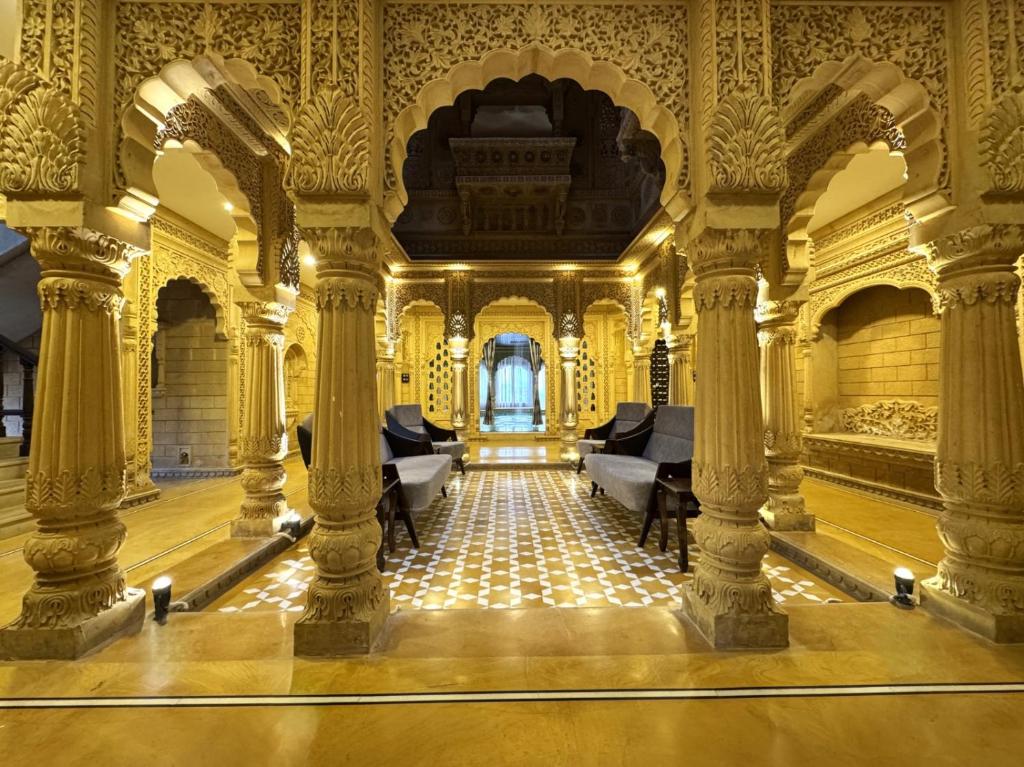
When choosing accommodation during a trip, travelers often face a delightful dilemma — should they book a standard guest room for comfort and convenience, or opt for a heritage room that offers charm, history, and a sense of timeless grandeur? While both serve the same essential purpose of providing rest and relaxation, a Heritage Room offers an entirely different experience — one that immerses guests in culture, architecture, and stories from a bygone era.
If you’re planning a visit to Rajasthan, the land of royal palaces and golden sand dunes, understanding the distinction between a regular guest room and a heritage room can elevate your stay from ordinary to unforgettable. Let’s explore what sets these two types of accommodation apart — from design and décor to ambiance, service, and the overall experience.
1. Architectural Grandeur and Historical Significance
A Heritage Room isn’t just a place to sleep; it’s a living piece of history. Usually located within heritage hotels, havelis, or restored palaces, these rooms are designed to preserve the architectural integrity and cultural essence of the region. High ceilings, intricately carved jharokhas (balconies), ornate arches, and traditional frescoes are some of the defining features that bring centuries-old craftsmanship to life.
In contrast, a regular guest room is built primarily for functionality and modern aesthetics. It focuses on providing comfort, convenience, and a clean, contemporary ambiance. The design is often minimalistic, with modern furniture, neutral color schemes, and standardized layouts.
A stay in a heritage room is like stepping into a royal past — every stone, pillar, and painting tells a story. For example, a Deluxe Heritage Room in Jaisalmer embodies this very essence. Nestled in a golden sandstone fortress city, such rooms reflect the regal charm of Rajasthan’s architectural heritage while offering all the modern comforts discerning travelers expect.
2. Cultural Ambiance and Décor
Décor plays a defining role in differentiating a heritage room from a regular guest room. A Heritage Room is adorned with antique furniture, vintage textiles, and handcrafted artifacts that echo the artistic traditions of the region. Rich fabrics like silk, brocade, and velvet are often used in upholstery, while chandeliers and brass lamps create a warm, royal glow.
Each element in a heritage room — from the hand-painted ceilings to the intricately designed wooden doors — contributes to a unique ambiance. The décor isn’t just ornamental; it’s a cultural narrative woven into the walls.
In contrast, a regular guest room emphasizes simplicity and uniformity. The décor is designed for comfort, with a focus on practicality and efficiency. While these rooms offer cozy beds, modern lighting, and essential amenities, they rarely carry a distinct personality or cultural identity.
3. Personalized Hospitality
The service philosophy in heritage hotels often goes beyond traditional hospitality. Because these properties are typically boutique in size and deeply rooted in family ownership or local management, guests receive a more personalized experience. Staff members often act as storytellers, narrating the history of the property or guiding guests through the cultural nuances of the region.
In a Heritage Room, attention to detail is paramount. Whether it’s a customized meal inspired by royal kitchens or a private tour of the property, guests are treated like members of a royal household rather than just visitors.
Regular guest rooms in modern hotels, on the other hand, follow standardized service models. The experience is efficient and professional, but often lacks the intimate, human touch that heritage stays are known for.
4. Location and Setting
Heritage hotels — and by extension, heritage rooms — are often situated in historically or culturally significant locations. They might be housed within ancient forts, royal residences, or old mansions surrounded by courtyards and gardens. Staying in one provides an authentic connection to the local landscape and its history.
For instance, a Luxury Hotel in Jaisalmer that offers heritage rooms will likely be located near the iconic Jaisalmer Fort or within the old city’s golden walls. This not only enhances the aesthetic appeal but also allows guests to feel truly immersed in the region’s heritage and charm.
In contrast, regular guest rooms are generally found in contemporary hotels, often located near city centers, airports, or business districts. These are ideal for travelers who prioritize convenience and accessibility over ambiance and historical immersion.
5. Experience and Atmosphere
Perhaps the most significant difference between a heritage room and a regular guest room lies in the experience. Staying in a heritage room is like being part of a story that has unfolded over generations. The atmosphere evokes nostalgia and wonder, allowing travelers to live — even if only for a few nights — like royalty.
From waking up to the sight of ornate arches bathed in morning sunlight to hearing the distant tunes of traditional Rajasthani folk music, the experience is immersive and emotional. It’s not just accommodation; it’s a memory in the making.
A regular guest room, though comfortable and often equipped with the latest technology, delivers a more predictable and uniform experience. It’s designed to provide rest and convenience, not cultural immersion or emotional resonance.
6. Culinary Heritage
Another aspect where heritage stays shine is in their culinary offerings. Many heritage hotels take pride in serving traditional, locally inspired dishes that reflect royal recipes or regional flavors. Meals are often prepared using time-honored techniques, presented in elegant dining halls reminiscent of royal banquets.
Guests might savor dishes once served to kings and queens — rich curries, handmade breads, and sweets infused with saffron and cardamom.
Regular hotels, by comparison, often feature international menus catering to a global clientele. While the food is varied and well-prepared, it usually lacks the cultural depth and storytelling that heritage dining experiences provide.
7. Design Philosophy and Craftsmanship
A Heritage Room reflects the architectural genius of artisans from centuries past. The design is not mass-produced — each room is unique. The use of local materials like sandstone, marble, and wood ensures authenticity, while handcrafted details like murals or latticework showcase the skills of traditional craftsmen.
In contrast, the design of a regular guest room is standardized for efficiency and comfort. While aesthetically pleasing, it often follows global design trends rather than local craftsmanship. The result is a modern, familiar environment — ideal for business travelers, but less evocative for those seeking cultural depth.
8. Heritage Preservation and Sustainability
Staying in a heritage room also contributes to cultural preservation. Many heritage hotels undertake restoration projects to conserve ancient architecture and promote sustainable tourism. By choosing such accommodations, guests indirectly support the maintenance of historical landmarks and local craftsmanship traditions.
Regular hotels, while often eco-conscious in modern design, are primarily built anew, focusing on contemporary sustainability practices rather than cultural restoration.
9. Value and Uniqueness
A heritage room offers more than just a luxurious stay — it offers value through uniqueness. No two heritage rooms are identical. Each carries its own character, shaped by history, architecture, and the stories of the people who once inhabited the space. This exclusivity makes every stay special.
In contrast, regular guest rooms deliver reliability and predictability — consistent amenities, standard furnishings, and familiar layouts. This consistency appeals to travelers who prefer convenience and efficiency over novelty and heritage.
10. The Best of Both Worlds
For travelers who seek to blend comfort with culture, properties like Best Accommodation in Jaisalmer offer the ideal balance. Here, heritage charm meets modern luxury — creating an atmosphere where guests can experience royal elegance without compromising on comfort or amenities.
Whether it’s ornate architecture, lavish interiors, or attentive service, such accommodations redefine what luxury means — merging the grandeur of the past with the sophistication of the present.
Conclusion
Choosing between a Heritage Room and a regular guest room ultimately depends on what kind of experience you seek. If you value efficiency, modern comforts, and predictability, a regular guest room will serve you well. But if you yearn for a stay that transcends time — filled with cultural richness, artistic beauty, and royal warmth — then a heritage room promises an unforgettable escape.
When in Rajasthan, the “Golden City” of Jaisalmer is a destination that epitomizes heritage living. Staying in a Deluxe Heritage Room in Jaisalmer or a Luxury Hotel in Jaisalmer ensures that your journey is not just about sightseeing — it becomes an immersive experience into India’s royal legacy, where every detail reflects the splendor of a bygone era.







